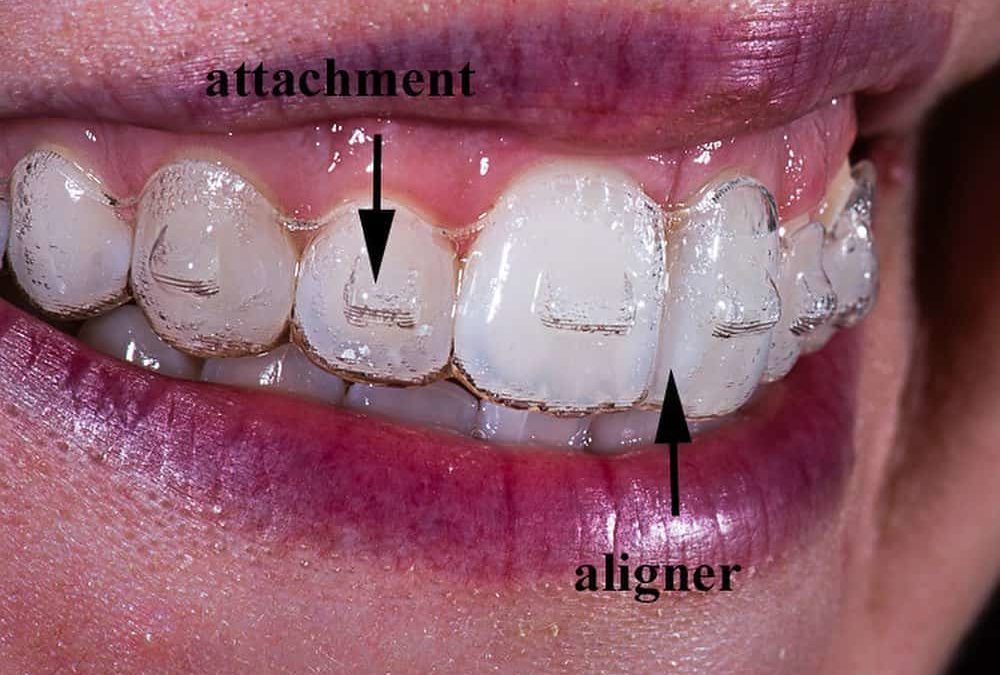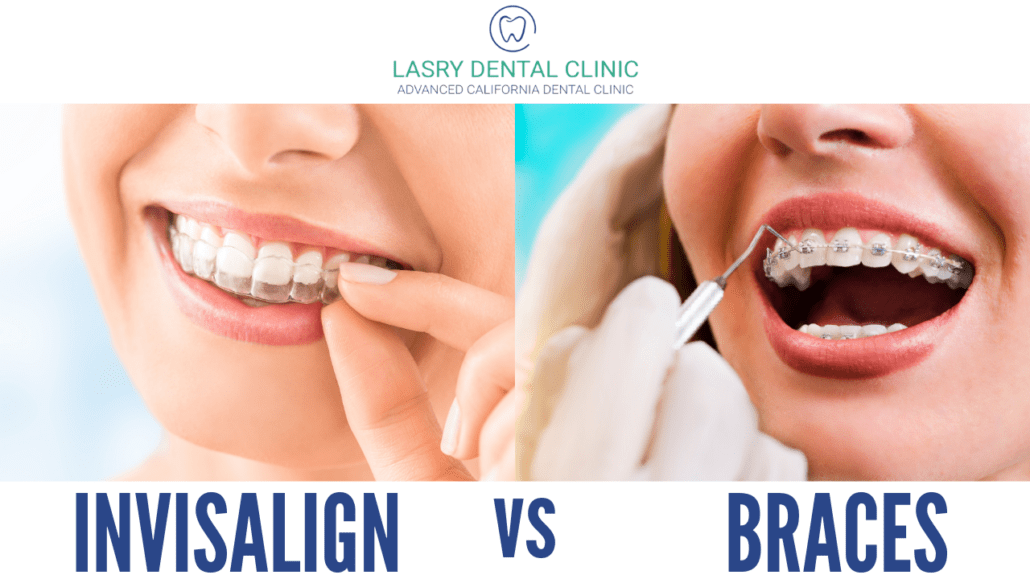How Invisalign Functions: Your Guide to Clear Aligners and Their Effectiveness
How Invisalign Functions: Your Guide to Clear Aligners and Their Effectiveness
Blog Article
Invisalign vs. Typical Dental braces: Which Alternative Is Right for You?
When considering orthodontic therapy, the choice between Invisalign and conventional dental braces presents a number of essential variables that merit careful assessment. Invisalign uses a discreet option with detachable aligners, while traditional dental braces supply a more noticeable yet efficient option for serious imbalance. Each option encompasses distinct advantages and disadvantages associated with aesthetic appeals, convenience, treatment period, and expense. Understanding these subtleties is crucial for making a notified decision that lines up with your individual preferences and way of life. The concern remains: which option will finest meet your orthodontic needs and expectations?
Review of Treatment Alternatives

In comparison, standard braces include steel brackets and cables that are bound to the teeth. This method uses continuous pressure with time to achieve placement. While reliable for intricate orthodontic problems, traditional dental braces need routine gos to for modifications and can present obstacles in preserving dental hygiene due to the problem of cleaning around cords and braces.
Both choices have their advantages, and the option frequently rests on certain oral problems, way of life preferences, and person conformity. Inevitably, consulting an orthodontic specialist is essential for identifying one of the most ideal treatment strategy customized to private demands. Comprehending the nuances of each choice can considerably affect the overall success of orthodontic treatment.
Visual Considerations
A substantial variable influencing the option in between Invisalign and traditional braces is the visual appeal each treatment offers. Invisalign aligners are crafted from clear plastic, making them practically unnoticeable when worn. This discreet look is specifically interesting teenagers and grownups that might really feel uncomfortable concerning their orthodontic therapy. The capacity to maintain an all-natural smile throughout the placement procedure can dramatically boost the patient's self-confidence in expert and social setups.
On the other hand, standard braces contain metal braces and cords, which can be a lot more noticeable. While improvements in orthodontic innovation have actually brought about the development of smaller sized braces and colored elastics, conventional dental braces still keep an even more obvious account. For some individuals, the visibility of dental braces may discourage them from looking for required treatment.
Ultimately, the choice in between Invisalign and typical dental braces may rest on individual choices pertaining to appearances. Individuals who prioritize discretion commonly favor Invisalign, while those who are less concerned about visibility might go with standard dental braces. Understanding the visual ramifications of each choice is important for making an informed decision that straightens with one's lifestyle and choices.
Convenience and Convenience

In regards to comfort, Invisalign aligners are removable, making it possible for patients to appreciate their favorite foods without restriction and preserve ideal oral hygiene. Brushing and flossing are simplified, as the aligners can be obtained during these routines, whereas conventional braces need mindful maneuvering around wires and braces.
In addition, Invisalign's dynamic system enables less orthodontic sees. Clients generally get numerous collections of aligners at once, which can enhance the treatment process and lower time spent in the orthodontist's chair. On the other hand, standard braces demand normal adjustments, making them less practical for those with active routines. Invisalign. Generally, the convenience and convenience of Invisalign make it an attractive option for numerous individuals seeking orthodontic therapy.
Treatment Period and Effectiveness
While both Invisalign and conventional dental braces are reliable in correcting dental imbalances, the period of therapy can vary considerably in between the two alternatives. Typically, Invisalign treatment can take anywhere from 12 to 18 months, depending on the intricacy of the situation. The clear aligners work by progressively changing teeth into their wanted settings, and routine follow-ups with an orthodontist aid make certain progress remains on the right track.
In contrast, standard braces typically require a longer commitment, normally this link varying from 18 months to 3 years. This is because of their set nature and making use of cables and braces, which can be extra efficient for extreme imbalances and complex cases (Invisalign). The treatment performance of conventional braces is well-documented, as they allow for specific adjustments and higher control over tooth motion
Eventually, the choice in between Invisalign and typical braces might depend upon both the awaited therapy period and the specific oral problems at hand. Consulting with an orthodontist is essential, as they can offer tailored referrals based on individual requirements, making sure the picked approach straightens with preferred timeframes and end results.
Price Comparison and Insurance Policy Choices
Expense plays a significant function in the decision-making process for individuals thinking about orthodontic therapy, whether going with Invisalign or conventional dental braces. Generally, the cost of Invisalign arrays from $3,000 to $8,000, while standard dental braces generally set you back in between $2,000 and $6,000. Elements affecting these costs consist of the complexity of the instance, the period of treatment, and geographical place.
Insurance insurance coverage can considerably influence out-of-pocket expenditures. Several dental insurance coverage plans offer partial coverage for orthodontic treatments, however the specifics can differ extensively. It is essential for people to review their YOURURL.com insurance coverage plans to establish the degree of insurance coverage for either choice. Usually, traditional braces may be more frequently covered by insurance policy plans compared to Invisalign, which some insurance companies classify as an aesthetic treatment.
Furthermore, several orthodontic techniques offer versatile repayment plans, making both therapy options a lot more available. Clients need to ask about prospective funding options and discounts for ahead of time settlements. Examining the complete expense, consisting of insurance policy benefits and layaway plan, is important for making an educated decision that aligns with both aesthetic preferences and budget plan factors to consider.

Final Thought
In recap, the choice in between Invisalign and standard braces depends upon numerous factors, including aesthetic preferences, convenience, therapy period, and cost. Invisalign uses a very discreet, removable option that promotes dental health and nutritional adaptability, while standard dental braces might be better for intricate dental problems and typically come at a lower price point. Eventually, examination with an orthodontist is necessary to examine individual situations and identify the most proper therapy choice for achieving optimal oral positioning.
When considering orthodontic therapy, the option in between Invisalign and standard braces presents a number of essential factors that warrant careful assessment.Comparing Invisalign and typical dental braces exposes unique treatment choices for orthodontic improvement.While both Invisalign and typical dental braces are effective in correcting dental misalignments, the duration of treatment can differ significantly between the two choices.Price plays a significant function in the decision-making procedure for people taking into consideration orthodontic therapy, whether opting for Invisalign or traditional dental braces.In summary, the choice between Invisalign and typical dental braces pivots on numerous aspects, consisting of visual preferences, convenience, therapy period, and expense.
Report this page